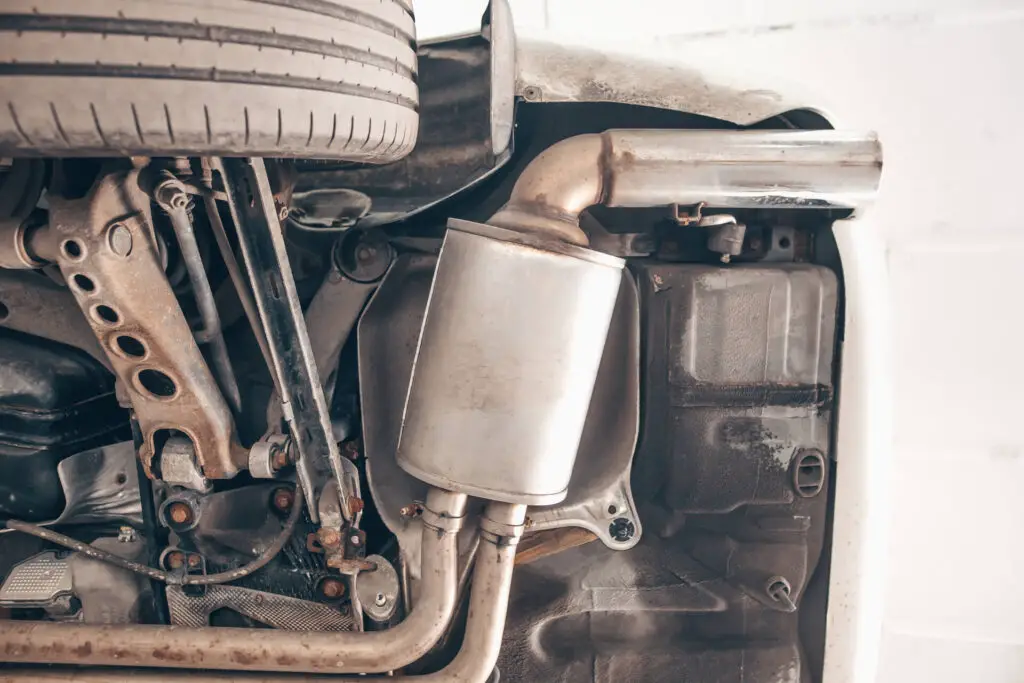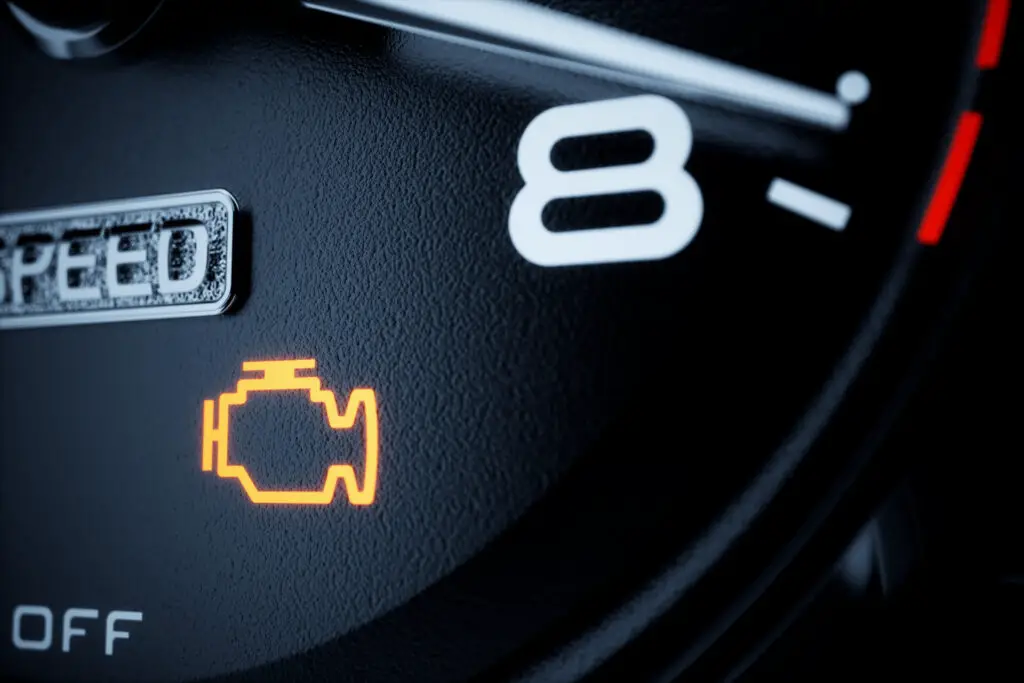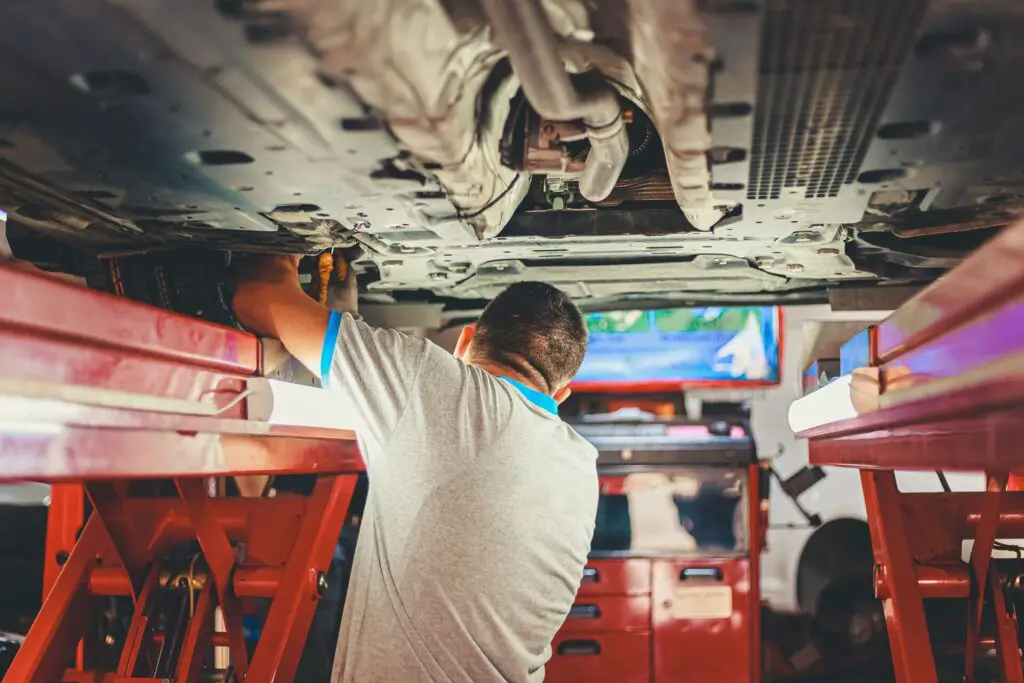What is the purpose of an exhaust emission system? An exhaust emission system is a key component of any automobile since it takes care of its hazardous emissions, redirecting them from the passenger cabin. Gas emissions need to be minimized at all costs since pollutants are harming the environment. The exhaust emission control system plays an integral part in this instance. I’d like to explain everything about the exhaust emission system and what needs to be done when you see that the emission light is on.
What Is the Purpose of an Exhaust Emission System?
Toxic gases from an automobile are controlled by the exhaust emission system. Its main purpose is to keep the air clean. First and foremost, it keeps the passenger and driver safe by redirecting the dangerous hydrocarbons.
The second purpose of the system is to lower the amount of air pollution your vehicle emits into the environment. It will also keep the vehicle from making loud noises.
As you can see, the exhaust emission system is key to a vehicle running smoothly and efficiently.
What Is the Vehicle’s Exhaust Emission System Made Up Of?
There are several components that go into this system. Check out the list below with all system’s elements:
- Catalytic converter – It is used for lowering the emission of nitrogen oxides, carbon monoxide, and unburned hydrocarbons.
- O2 sensors (oxygen sensors) – They are the most important parts of the engine because they keep track of the air-to-fuel ratio. The findings are used to adjust fuel economy and increase the performance of the car. When it’s not working efficiently, the catalytic converter can be damaged, and the engine won’t perform well.
- Power Control Module – The vehicle’s electronic control system is the PCM. It frequently combines the functions of the transmission control unit and engine control unit. It reads the data provided by the O2 sensors.
- Onboard Diagnostic System – It provides you with details about how the system is working. The details will appear in the form of Diagnostic Trouble Codes (DTC). Reading the codes is possible by using a code reader or a scan tool.
- Muffler – It is a device that is designed to make the engine less noisy. It is referred to as a silencer as well.
- Exhaust pipes – At the back of an automobile, there is a pipe that lets the gas escape from your engine.
- Headers (exhaust and intake manifolds) – The intake manifold is an aluminum or iron tube that carries the mixture of air and fuel from your carburetor to your engine intake port. On the other hand, exhaust manifolds are tubes that remove gases from a vehicle’s engine cylinders.
Where Is the Exhaust Emission System Located in the Car?
Most people think that the only visible part of the exhaust emission system is the exhaust pipe in the back of the vehicle. But, the complete system has linked components throughout the entire vehicle. The first part of the emission system is behind your engine, then it spans across the entire underside of the car and ends with an exhaust pipe at the car’s back.

What Is the Emission Control System And Why Is It Important For the Exhaust Emission System?
Since all vehicles have an exhaust emission system, they also need an emission control system. Even though the exhaust emission system takes care of harmful emissions, it’s actually the emission control system that limits the production of toxic gases from the engine and other vehicle elements.
The gases come from four sources. The first source is the engine exhaust system, the second is the fuel tank, the third source is the carburetor, and the fourth is the crankcase. I will primarily focus on the gases from the exhaust emission system.

What is the Purpose of the Emission Control System?
The pollution is produced by vehicles during normal use. The degree to which we pollute also depends on the gas we use. Emission control systems are needed for limiting the pollution caused by the harmful products of burning and storing fuel. Since the fuel tank and the carburetor allow fuel to dissipate and escape into the atmosphere, these emissions are called evaporative.
On the other hand, the exhaust emissions system and the crankcase emit pollutants from the engine into the atmosphere. These emissions are a result of lead compounds, hydrocarbons, oxygen, and oxides of nitrogen from the air that get burned in the combustion chamber. These harmful gases need to be controlled and limited. In a compression ignition engine, gases come from the engine and are released into the atmosphere from the crankcase breather and the exhaust pipe. There are different types of emission control systems the automobile can have.
Diesel Particulate Filter
DPF is a filter that catches the soot produced by the exhaust manifold after the combustion. Solid particles get trapped and collected. Regeneration is used to refer to the process when the soot gets burned. This occurs when the automobile is driven in a controlled environment.
Evaporative Emission Control
The cars can have evaporative emission control, which eliminates the hydrocarbons that come from the fuel tank. It lets the gases circulate to the combustion chamber. The main component that makes this system useful is a carbon canister. It is designed to store hydrocarbons. This type of control system is ideal since it doesn’t just limit the toxic gases, but it makes the car run more efficiently.
Selective Catalyst Reduction
This is considered to be an advanced type of gas control. It is primarily used in diesel engines that are higher in capacity. It has allowed this kind of engine to comply with BS6 norms. It functions together with the diesel particulate filter. Adbul fluid is a part of the selective catalyst reduction method, and it converts NOx into water, CO2, and nitrogen. These gases are not as harmful as NOx, and they are simply removed via the exhaust pipe.
Exhaust Gas Recirculation
Exhaust Gas Recirculation is responsible for lowering the temperature of the engine as well as for limiting emissions. It can be used with turbocharged diesel and petrol engines. The way it functions is that the exhaust manifold directs exhaust emissions toward the intake manifold and that is how the gases and temperatures are decreased.
What Are the Signs of a Faulty Exhaust Emission System?
Now that you are aware that a lot goes into the system intended for controlling the emissions in a car, now it’s time to learn what can indicate that the system needs to be repaired. Just like when a water pump is bad, or your fan clutch is faulty, you’ll notice some signs.
The obvious sign that something is wrong is when the car gets loud when you start the car. Noisy vehicles indicate that their mufflers are faulty. As you are driving, more and more unpleasant sounds attract your attention.
Another common telltale sign of a system that is out of order is low fuel efficiency. You’ll realize that you are making more frequent stops to refill the tank, which just means that the system is consuming more fuel than usual. Bear in mind that this problem needs to be fixed as soon as possible. If you don’t repair it, it might lead to more serious damage to the engine.
Additional symptoms that indicate that something is wrong are loss of power upon acceleration, an unpleasant noise when you turn the ignition on, and a disgusting smell when you are driving.
Does the Engine Light on the Dashboard Indicate Problems With Emissions?
Yes, but not always. The primary reason the engine light comes on is an issue with the exhaust emission system. How much carbon monoxide your vehicle emits is measured by the emissions control system. If the engine starts to consume more or less gas, the engine light might come on.
On the other hand, the engine light can also indicate that the diesel particulate filter is blocked. When the filter is having difficulty removing toxic particles, the light will come on. Another symptom can be that the ignition system or the airflow sensor is faulty.

What You Should Do if You Suspect Something Is Wrong With the Exhaust Emission System?
In case you smell fumes or hear unpleasant and loud noises, a part of the system needs to be fixed or replaced. Decide to take the vehicle for an inspection at the mechanics. If you continue to disregard the obvious signs, you might end up with more damaged elements, and then you might need to replace the engine, muffler, or catalytic converter.
It would be ideal to take the vehicle regularly for inspection. If you need your mechanic to adjust a parking brake or to check a spark plug, ask the mechanic to test the exhaust emission system as well.
The repair can cost you between $350 and 1,500 dollars. You won’t know the exact cost until the mechanic detects what needs to be fixed or replaced. On top of that, labor fees vary from place to place. It’s not wise to replace any part by yourself since it is not as simple as changing a flat tire or just replacing a tail light. You need someone who is an expert.
What Can Impact the Price of the Repair the Most?
Here is a list of all the factors that need to be taken into consideration when predicting how much it might cost to repair your vehicle:
- The type of the exhaust system – There are two types of this system. The first one is referred to as the axle-back system, while the second one is referred to as the cat-back system. The components that make up each one are slightly different. Generally, it will cost you more to replace or repair the cat-back system.
- The model of the automobile – Individuals who own high-performance and luxury vehicles will need to spend more on their repairs. Fortunately, those who drive economical vehicles won’t have to drain their budget.
- Materials the parts are made of – It will cost more to get the parts that are made from stainless steel than those that are made from mild steel.
- Labor fees – Paying a professional is the best option; however, it might end up costing more depending on your location. Additionally, if they need to work on a high-priced vehicle, they might require more expertise, and thus the bill will end up costing more.

Frequently Asked Questions About Exhaust Emission System
What Is the Most Common Issue Of the Exhaust Emission System?
Among many problems that can happen to the exhaust system, the most common issue involves rust as well as wear and tear. Rust can be found frequently under the vehicle since the components get easily wet. Once it starts to spread, you will end up with damaged components. Also, as you are driving the car, the parts will get used up, and after a while, they won’t function as they should. Exhaust manifolds and oxygen sensors are very susceptible to wear and tear.
Do Electric Vehicles Have Exhaust Emission Systems?
With the continuous evolution of cars, some integral components have become redundant, and this applies to exhaust emission systems as well. Fully electric vehicles don’t have exhaust systems. There aren’t any emissions since the cars run on electricity. There is no fuel tank, fuel line, or fuel pump. But, the benefit of not having an exhaust emission system comes with a price tag since these types of vehicles have high prices.
How Can Emissions Be Controlled?
The emission systems are designed to control and limit the pollutants as much as possible. There are different types of systems that cars can use, such as exhaust gas recirculation, selection catalyst reduction, and evaporative emission control.








